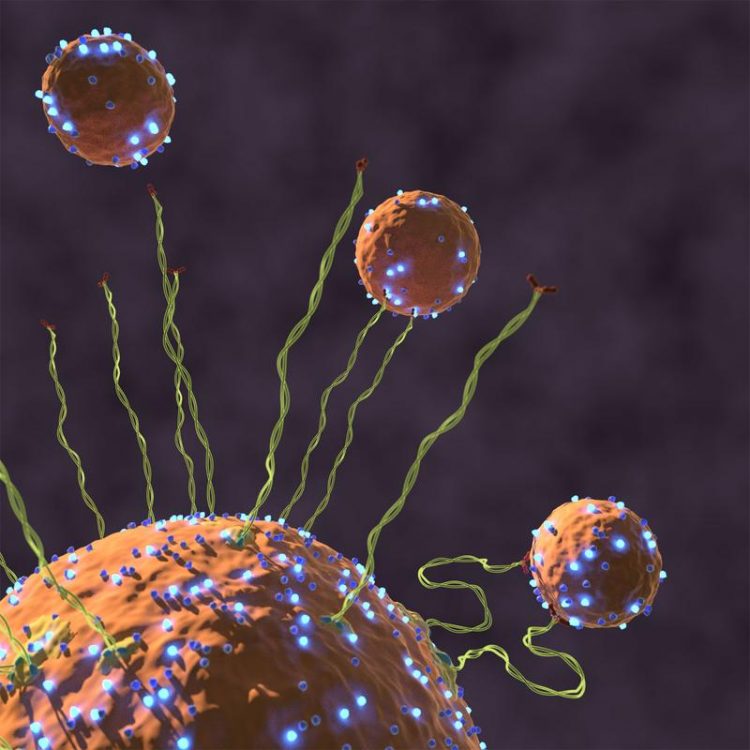From rigid to flexible

Capture of a vesicle by an endosome by the tethering factor EEA1 binding Rab5. Active Rab5 (shiny blue particles) induces a change in flexibility of EEA1 (green filaments) generating an entropic collapse force that pulls the vesicle toward the target membrane to dock and fuse. Credit: Mario Avellaned
This cargo is located in or on intracellular membranes, called vesicles. These membranes have a signature, and only those with the correct signature may fuse with the membrane of another organelle into one compartment.
The membrane itself must be recognized by a target membrane, which employs long tethering proteins to find its match.
David Murray and Marcus Jahnel from the labs of Marino Zerial at the Max Planck Institute of Molecular Cell Biology and Genetics (MPI-CBG) and Stephan Grill at the Biotechnology Center of the TU Dresden were curious to find out how these large tether proteins are able to recognize the signature of a membrane compartment and pull it in in order for the small fusion proteins to engage.
They and their colleagues discovered that when the vesicle docks by an active protein called Rab5, GTPase, this protein is sending a message along the rigid tether protein to become flexible.
This change in flexibility results in a force that starts the vesicle's trip towards the target membrane to initiate docking and fusion.
This newly found mechanism is published in the journal Nature and intuitively explains how traffic within the cell can be efficient and selective, and resolves a paradox of sizes.
Media Contact
All latest news from the category: Life Sciences and Chemistry
Articles and reports from the Life Sciences and chemistry area deal with applied and basic research into modern biology, chemistry and human medicine.
Valuable information can be found on a range of life sciences fields including bacteriology, biochemistry, bionics, bioinformatics, biophysics, biotechnology, genetics, geobotany, human biology, marine biology, microbiology, molecular biology, cellular biology, zoology, bioinorganic chemistry, microchemistry and environmental chemistry.
Newest articles

Sea slugs inspire highly stretchable biomedical sensor
USC Viterbi School of Engineering researcher Hangbo Zhao presents findings on highly stretchable and customizable microneedles for application in fields including neuroscience, tissue engineering, and wearable bioelectronics. The revolution in…

Twisting and binding matter waves with photons in a cavity
Precisely measuring the energy states of individual atoms has been a historical challenge for physicists due to atomic recoil. When an atom interacts with a photon, the atom “recoils” in…

Nanotubes, nanoparticles, and antibodies detect tiny amounts of fentanyl
New sensor is six orders of magnitude more sensitive than the next best thing. A research team at Pitt led by Alexander Star, a chemistry professor in the Kenneth P. Dietrich…





















